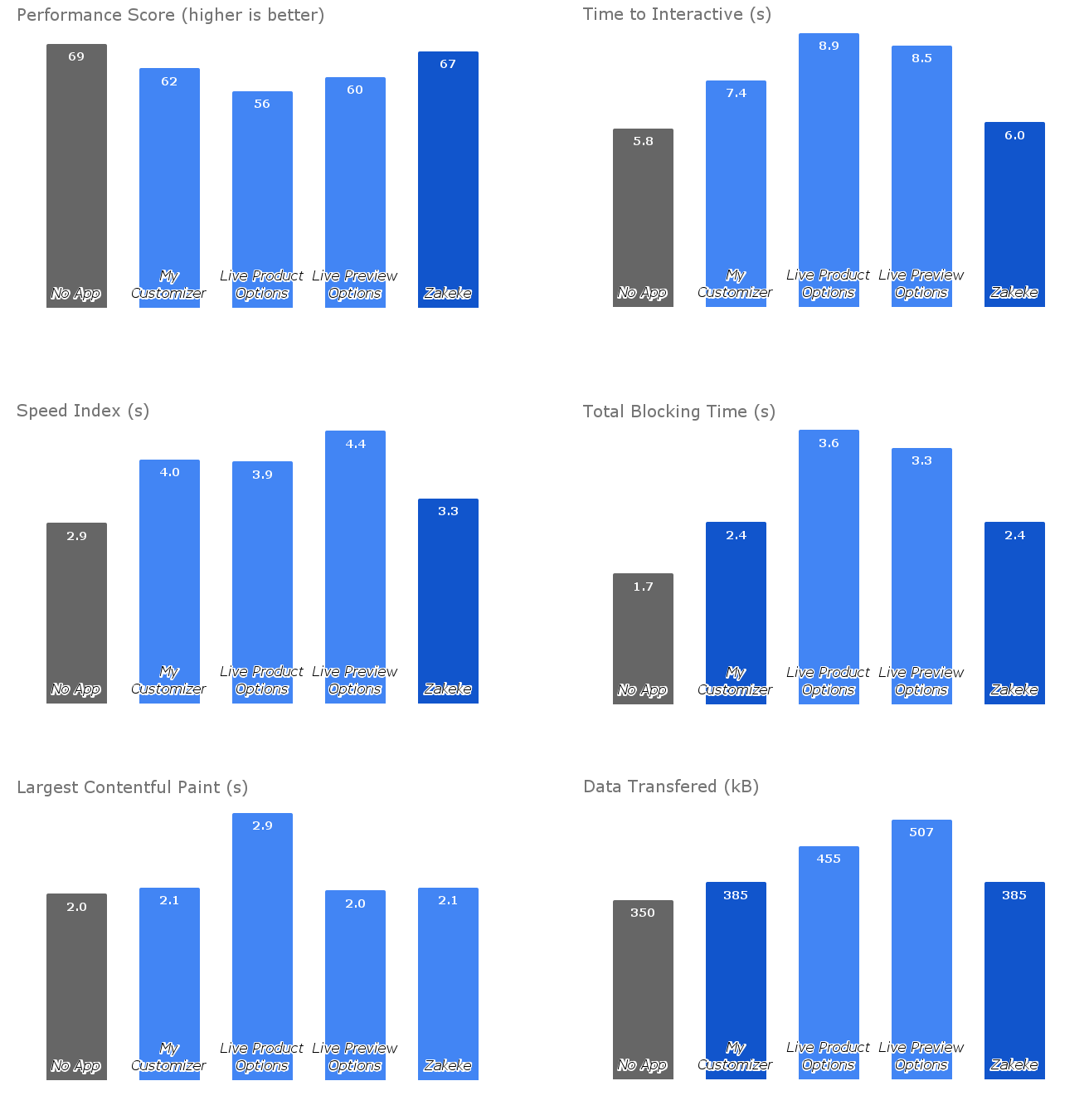Shopify product designer: a speed comparison of 4 apps
A review of 4 Shopify product customizer apps, in terms of performance impact on the website.

Do you sell products that the customer can add text to, in order to personalize them? Jewelry, t-shirts, mugs?
Ever wanted to give your store’s visitors the chance to see what the product will look like with their name on it?
The Shopify app store has a lot of options when it comes to this kind of customization and live preview.
I wanted to find out how these apps affected a Shopify store in terms of performance. Can they drop your Google Performance score? Will they slow down the site significantly, so that some of your visitors might bounce?
I reviewed 4 of these apps, to see how well they did in terms of speed, and how quick they are to use on the customer’s side.
The use case
What I wanted to achieve, is to be able to sell a mug that the customer can place some text on, and see it changed live on a preview area.
This case is simple, but many types of products can use the same features.
The process is more or less the same on all apps. On the app’s dashboard, you upload the image (or pick an existing product image), add the option to edit the text, indicate where the text will go (plus some other details), and you’re good to go.
The apps
I picked a few popular apps for this, ruling out apps that had a very low number of reviews and a low rating on the Shopify app store.
These are the apps that were tested:
- Best Product Customizer by MyCustomizer
- Live Product Options by Cloudlift
- Live Preview Options by Webyze
- Zakeke Product Customizer by Zakeke
The testing process
Apps were installed on a clean, lightweight theme, each one separately.
After the app was configured, I ran three consecutive Lightspeed tests on mobile, on the home page.
The reason I picked the home page, is that since the customizer widget / popup / window should affect the product page only. There’s no reason for it to slow down other pages of your store.
I also counted how many clicks were required for the product to be customized by the customer and added to the cart.
The results
Here are the averages of each test (click to zoom):
The winner
The clear winner here is Zakeke. It’s almost not affecting the performance score at all (from 69 to 67).
The home page took 1.5s less time to become interactive compared to the other apps, and it’s a winner in pretty much all the other metrics too.
At this point, it’s worth mentioning that My Customizer and Live Product Options had a product page UI that required only 2 clicks by the user to customize the text on the product and add it to the cart.
Zakeke and Live Preview Options required 3 clicks for this.
Conclusion
We see that every app tested, loaded assets on the homepage even if it wasn’t used there at all.
Is that necessary?
We also have to ask this question: if adding an app decreases your store’s performance by 10 points, how much will it be decreased when you install 3, 5 or 10 apps?
Once again, we see that decisions like these are critical, and stores with a lot of added functionality will always need extra optimization and attention.
Thanks for reading!



